Angola is a country located in Southern Africa, and it is home to a rich and diverse population of birds. With its varied habitats, ranging from coastal lagoons and wetlands to savannas and tropical forests, Angola is an important stopover for migratory birds from Europe and North Africa, as well as a breeding ground for many local species.
Angola’s extensive birdlife includes several endemic species, birds of prey, waterfowl, and wading birds, among others. This article will explore the unique avian diversity of Angola, and the conservation efforts being made to protect these birds and their habitats.
1. Turaco
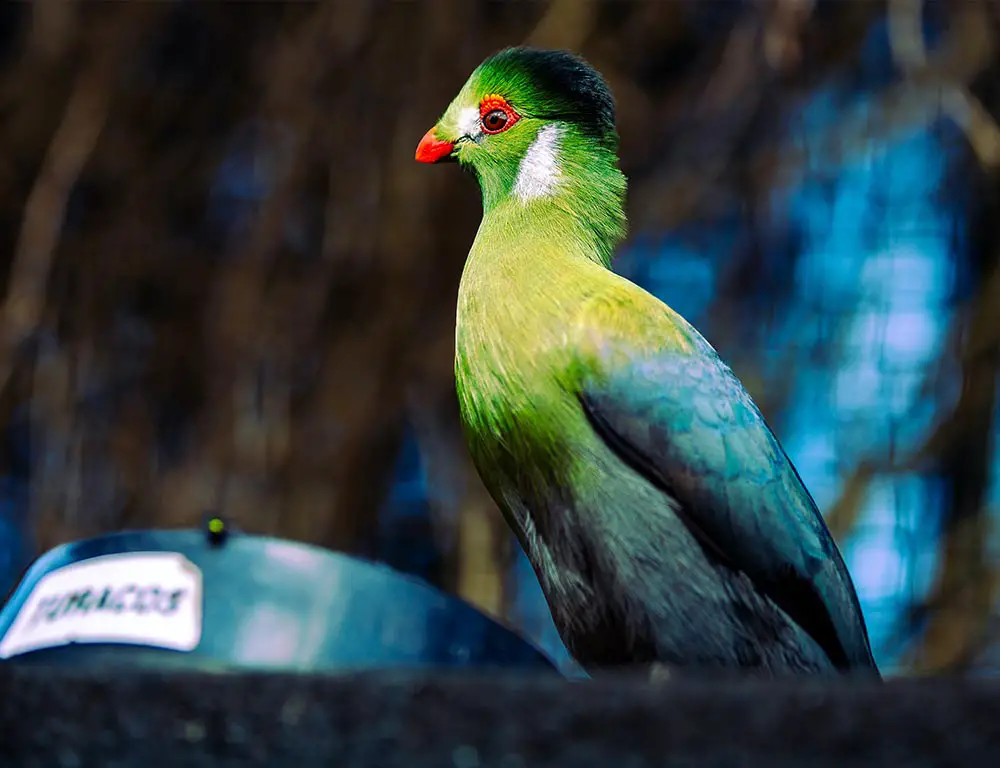
Turacos are a unique bird family that inhabits tropical and subtropical regions of Africa. They are also known as “banana-eaters” or “loeries” in southern Africa, due to their diet which consists mostly of fruit such as plantains.
These birds have an interesting semi-zygodactylous foot structure – the fourth toe can be switched back and forth while the second and third toes remain conjoined.
Turacos come in different sizes depending on species but they all generally boast bright colors like green, blue, purple, or red feathers with vibrant yellow eyes.
In addition to being beautiful creatures, these birds make loud calls during mating season which makes them even more special.
Scientific classification:
| Kingdom | Animalia |
| Phylum | Chordata |
| Class | Aves |
| Clade | Otidimorphae |
| Order | Musophagiformes Seebohm, 1890 |
| Family | Musophagidae Lesson, 1828 |
2. Red-Crested Turaco
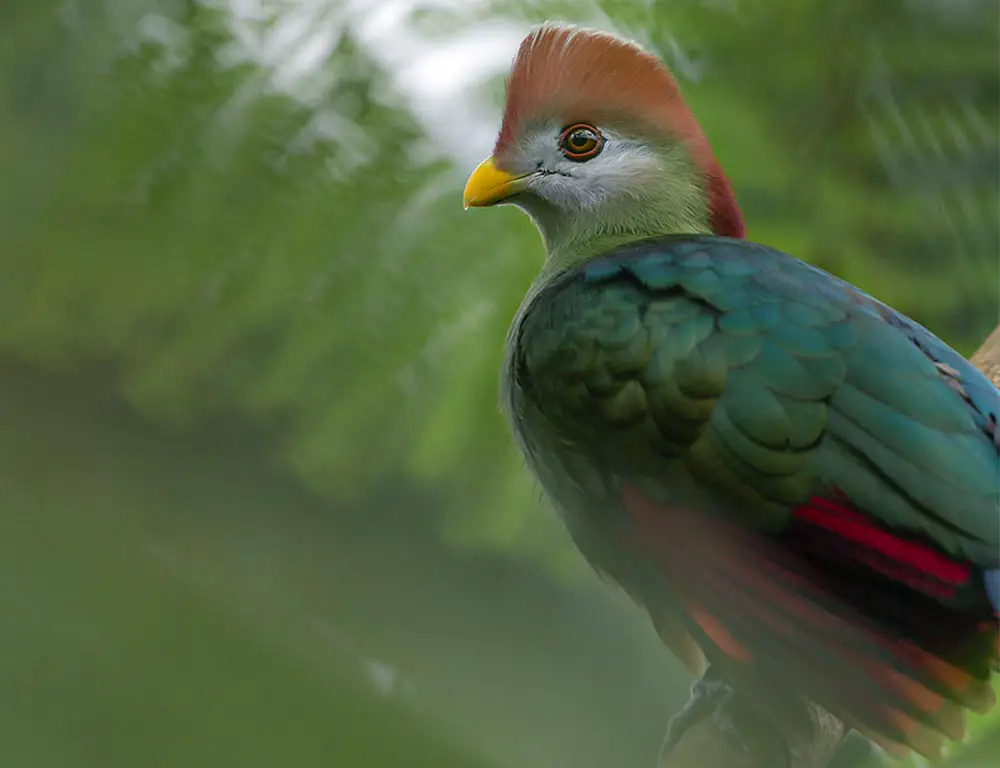
The Red-crested Turaco is an African Otidimorphae bird native to western Angola, standing 45-50 cm tall and weighing 210-325 g. It has a distinctively red crest on its head and bright green face, distinguishing itself from the Bannerman’s turaco which features yellow plumage instead of red.
The call of this species sounds like that of a jungle monkey. These birds are often seen in flocks searching for their frugivorous diet consisting mainly of fruits and berries.
They also sometimes eat insects such as grasshoppers or caterpillars to supplement their diet. This colorful species makes an excellent addition to any backyard aviary with its vibrant colors and unique vocalizations.
Scientific classification:
| Kingdom | Animalia |
| Phylum | Chordata |
| Class | Aves |
| Order | Musophagiformes |
| Family | Musophagidae |
| Genus | Tauraco |
| Species | T. erythrolophus |
3. Gabela Helmetshrike
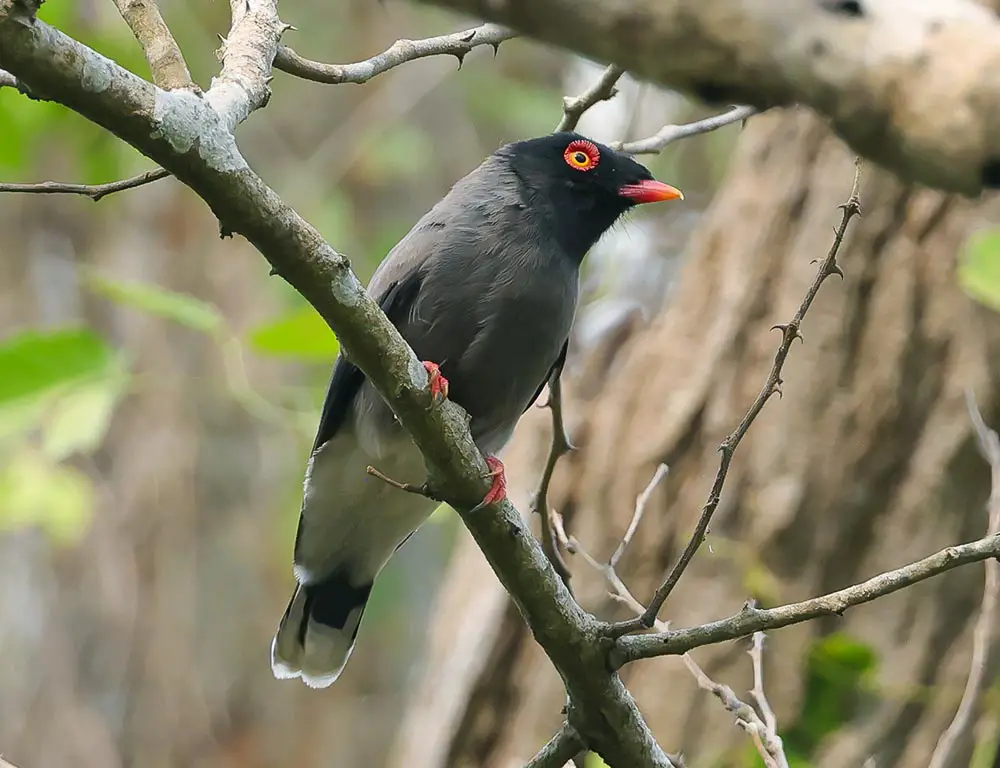
The Gabela helmetshrike is a species of bird that can be found in Angola. It belongs to the family Vangidae and was once included in Malaconotidae.
This beautiful bird lives in lowland or montane subtropical forests which are threatened by habitat loss due to deforestation, making this species vulnerable to extinction.
The Gabela helmet shrike has an unmistakable look with white feathers on its head, wings, and neck combined with black streaks along its back and tail as well as yellowish-white belly patches.
Its diet consists mainly of insects such as caterpillars, grasshoppers, and beetles but it also eats fruit when available throughout the year.
With conservation efforts, these birds could have a chance at thriving again.
Scientific classification:
| Kingdom | Animalia |
| Phylum | Chordata |
| Class | Aves |
| Order | Passeriformes |
| Family | Vangidae |
| Genus | Prionops |
| Species | P. gabela |
4. Swierstra’s Spurfowl
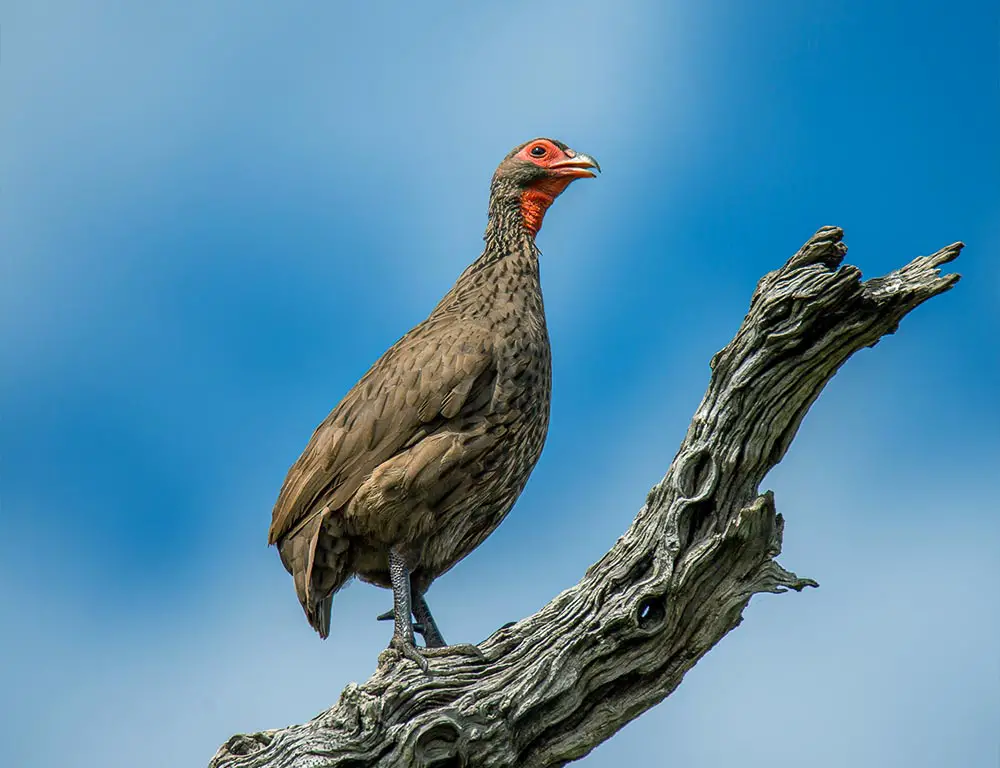
Swierstra’s spurfowl is a species of bird found only in Angola, which inhabits the rapidly shrinking Afromontane forests located on mountains such as Mount Moco and Mount Soque.
This unique avian species has been named after the South African entomologist Cornelis Jacobus Swierstra.
These birds inhabit subtropical or tropical moist montane forests but are threatened by habitat loss caused by human activities and deforestation.
The conservation status of this endangered species remains uncertain due to limited data on its population numbers and ecology in its native range.
As a result, further research is needed to ensure that suitable habitats remain available for these animals so they can continue to thrive within their natural environment without any disturbance from humans.
Scientific classification:
| Kingdom | Animalia |
| Phylum | Chordata |
| Class | Aves |
| Order | Galliformes |
| Family | Phasianidae |
| Genus | Pternistis |
| Species | P. swierstrai |
5. Gabela Bushshrike
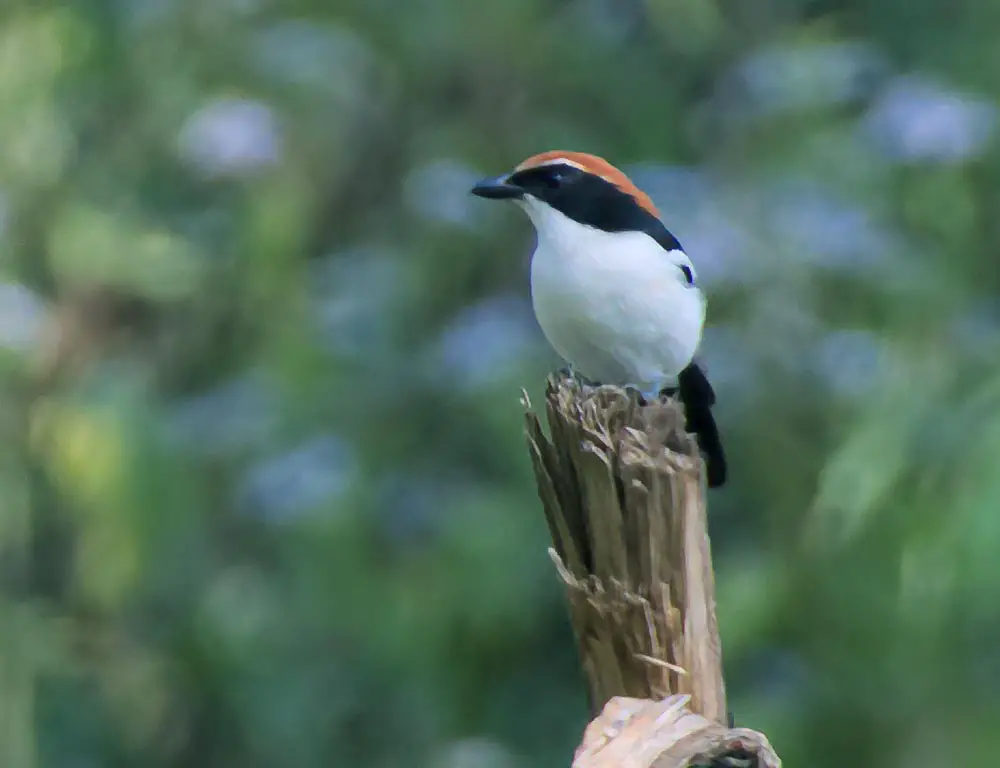
Gabela Bushshrike is a bird species of the Malaconotidae family and is native to Angola. It has an elusive character, with it yet unclear whether or not it should be considered as its own species or just another subspecies of Lühder’s bushshrike.
This rare bird inhabits moist montane forests, however, human activities are threatening this habitat and putting Gabela Bushshrikes at risk.
To ensure their survival, measures must be taken to protect these birds’ natural habitats from deforestation and other disturbances caused by humans.
Scientific classification:
| Kingdom | Animalia |
| Phylum | Chordata |
| Class | Aves |
| Order | Passeriformes |
| Family | Malaconotidae |
| Genus | Laniarius |
| Species | L. amboimensis |
6. White-fronted wattle-eye
The White-fronted Wattle-eye is a rare bird species endemic to Angola. It typically inhabits dry forests, mangrove forests, and shrublands. Unfortunately, this species is under threat due to habitat loss caused by deforestation in the region.
The birds are medium-sized with black uppersides and whitish undersides which give them their name – white fronts. They have yellow eyes with an orange or red eye ring around them which makes for an impressive look against their dark feathers.
As well as being colorful these wattle-eyes are also very vocal; they communicate through high-pitched calls and whistles throughout the day making it easy to spot one of these beautiful creatures on your next trip out into nature.
Scientific classification:
| Kingdom | Animalia |
| Phylum | Chordata |
| Class | Aves |
| Order | Passeriformes |
| Family | Platysteiridae |
| Genus | Platysteira |
| Species | P. albifrons |
7. Braun’s Bushshrike
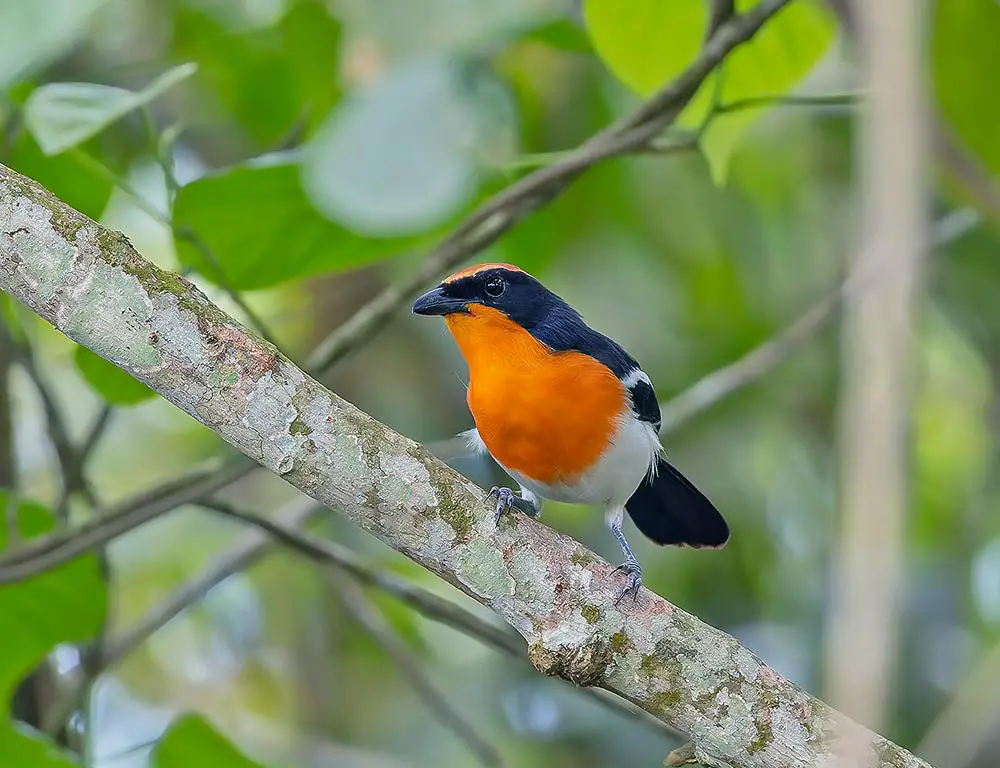
Braun’s bushshrike is a species of bird found in the family Malaconotidae and endemic to Angola. It is also known as orange-breasted bushshrike due to its distinctive coloration, although this name can also be used for Chlorophoneus sulfureopectus.
This bird lives mainly in subtropical or tropical moist lowland forests but unfortunately, these habitats are being destroyed leading to a decline of their populations.
The common name and Latin binomial commemorate Ernst Braun, who was an Austrian ornithologist from the nineteenth century.
This stunning small passerine has black upperparts with white streaks followed by brilliant yellowish-orange underparts which makes it stand out from other birds.
Scientific classification:
| Kingdom | Animalia |
| Phylum | Chordata |
| Class | Aves |
| Order | Passeriformes |
| Family | Malaconotidae |
| Genus | Laniarius |
| Species | L. brauni |
8. Grey-Striped Spurfowl
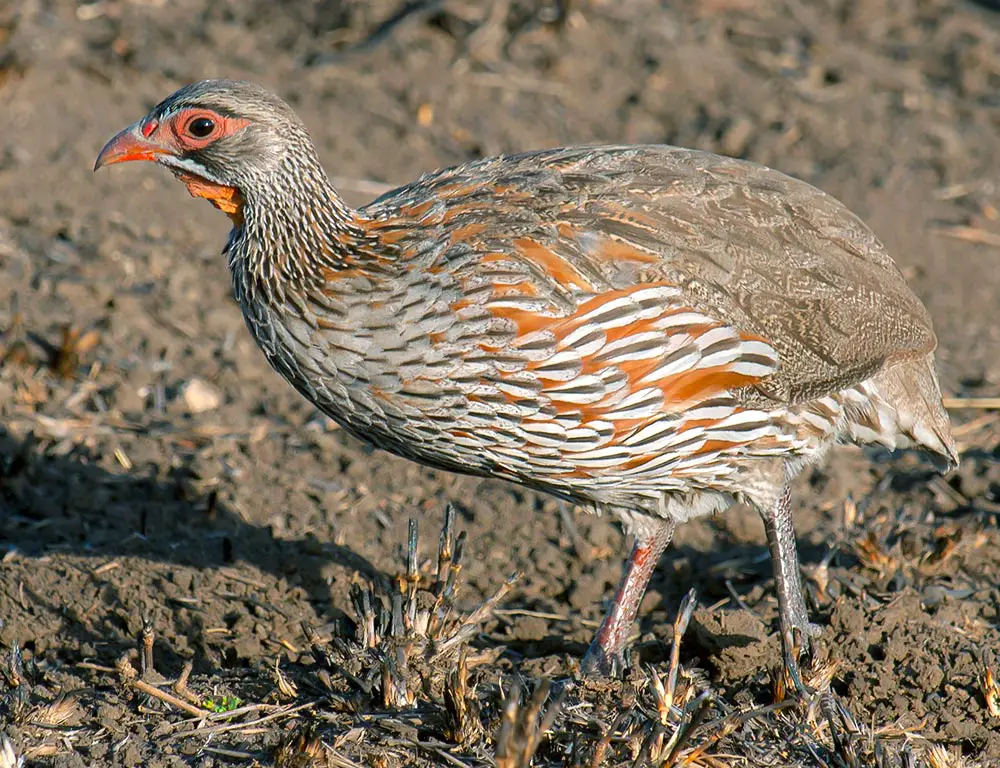
The Grey-striped Spurfowl is an endangered species of bird found only in Angola. It inhabits subtropical or tropical dry forests, moist lowland forests, and dry grasslands.
Unfortunately, its natural habitats are being destroyed due to human activities such as deforestation and urbanization which leads to the reduction of this unique species’ population size.
This bird was described by a Scottish Ornithologist in 1890 for the first time and belongs to the Phasianidae family.
Its grey stripes on feathers make it look distinct from other birds making it more attractive for people who love wildlife watching but unfortunately, they need our help too if we want them to exist longer so instead of destroying their habitat let’s conserve them.
Scientific classification:
| Kingdom | Animalia |
| Phylum | Chordata |
| Class | Aves |
| Order | Galliformes |
| Family | Phasianidae |
| Genus | Pternistis |
| Species | P. griseostriatus |
9. Red-Backed Mousebird
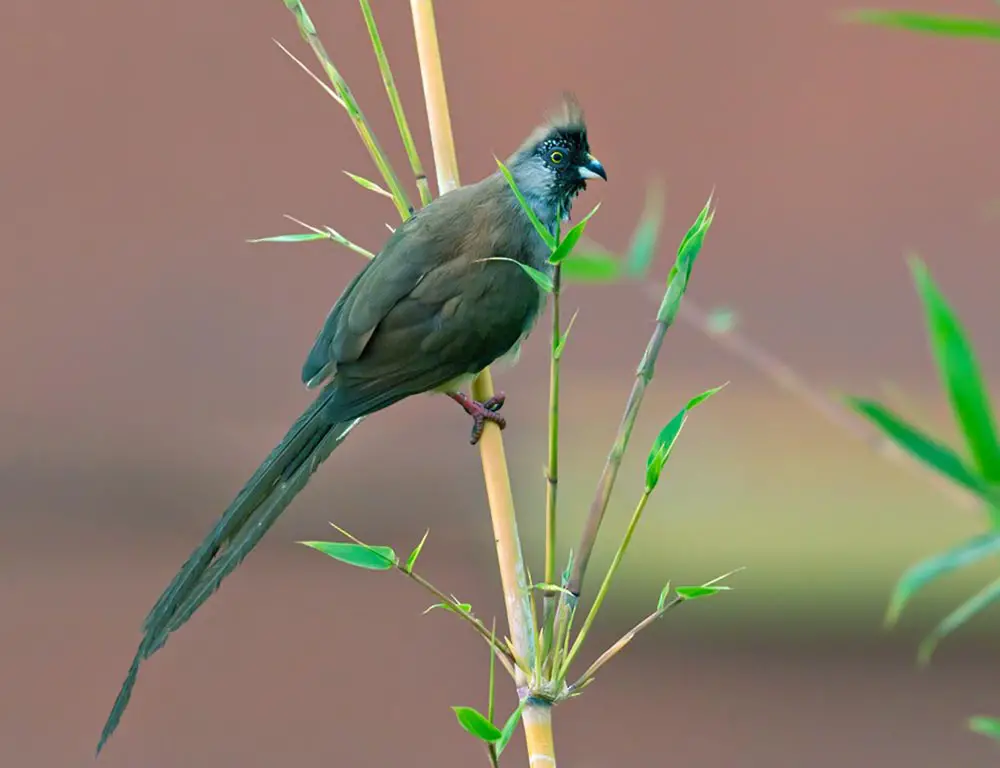
The Red-backed Mousebird is a species of bird in the Coliidae family, found primarily in Angola and Democratic Republic of the Congo. It is named after its soft feathers that resemble a mouse’s fur, as well as the red or chestnut patch on its back.
These birds prefer to nest near river borders with plentiful vegetation such as trees for food sources. They feed mainly on fruits, buds, flowers, and insects while they search nearby branches for nesting materials like small twigs and grasses.
Additionally these birds are known to be very social animals who often flock together when searching for food within their habitat; which can also include open fields too.
Their distinctive call can reach up to one kilometer away from where it was emitted – making them quite vocal creatures indeed.
Scientific classification:
| Kingdom | Animalia |
| Phylum | Chordata |
| Class | Aves |
| Order | Coliiformes |
| Family | Coliidae |
| Genus | Colius |
| Species | C. castanotus |
10. Angola Lark
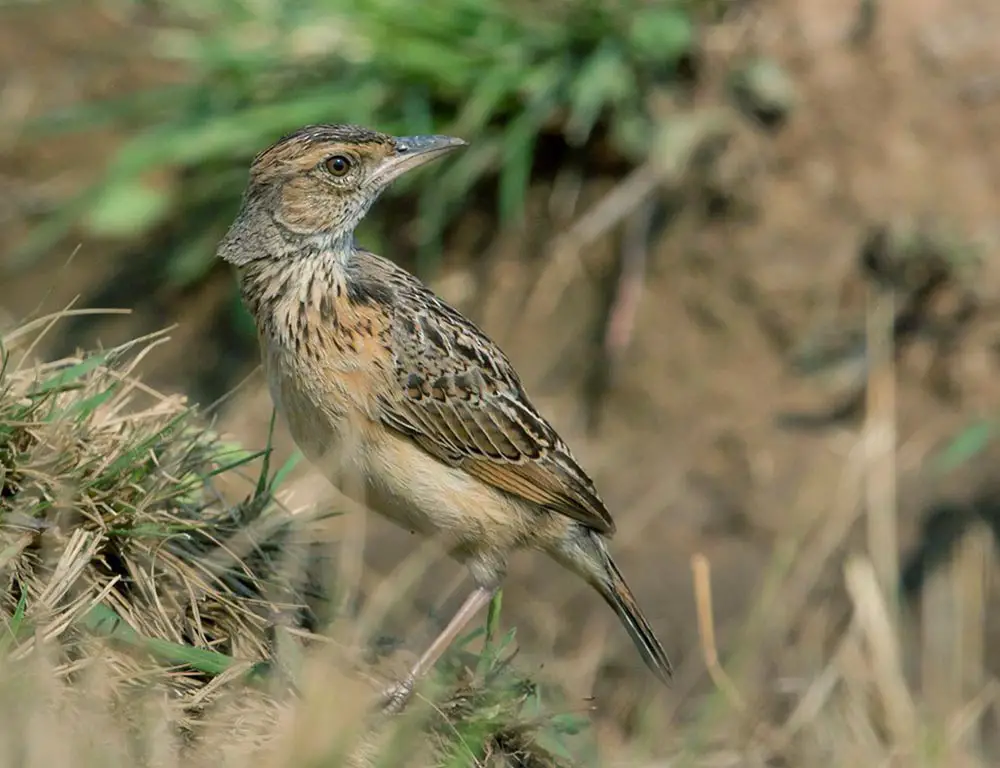
The Angola lark is a species of bird found in the family Alaudidae and inhabits southern and central Africa. It has three recognized subspecies, with a range that covers Angola, the Democratic Republic of Congo, Tanzania, and Zambia over an estimated global extent of 170,000 square km.
Its natural habitats include open savannahs or grasslands as well as cultivated areas like farms or villages where it can be found foraging on the ground.
The brownish-grey plumage gives way to white streaks along its wings which are used during courtship displays similar to those seen in other larks such as singing from high perches or flying up into the air with bursts of song.
Scientific classification:
| Kingdom | Animalia |
| Phylum | Chordata |
| Class | Aves |
| Order | Passeriformes |
| Family | Alaudidae |
| Genus | Mirafra |
| Species | M. angolensis |
11. Bubbling Cisticola
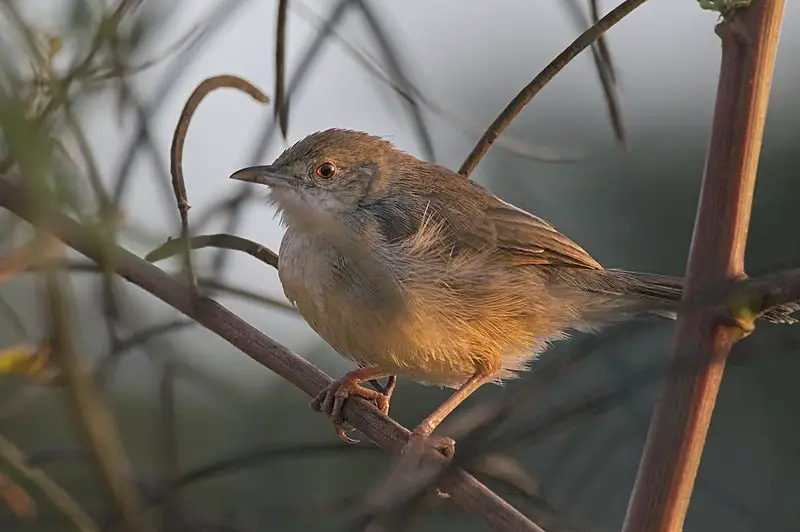
The Bubbling cisticola is a small bird with striking colors. It can be found in Angola and the Democratic Republic of the Congo, living mainly in dry savanna and subtropical or tropical lowland grasslands.
This species has an incredibly unique song; its typical pattern consists of two “che” notes followed by a long, liquid trill. Some say it sounds like bubbling water. In addition to this beautiful sound, these birds have stunning plumage.
They are mostly yellow-green on their backside and white underneath with black streaks along their wings which further emphasizes their beauty. All in all, the Bubbling Cisticola is both aesthetically pleasing as well as melodious – surely making it one of nature’s greatest gifts.
Scientific classification:
| Kingdom | Animalia |
| Phylum | Chordata |
| Class | Aves |
| Order | Passeriformes |
| Family | Cisticolidae |
| Genus | Cisticola |
| Species | C. bulliens |
12. Monteiro’s Bushshrike
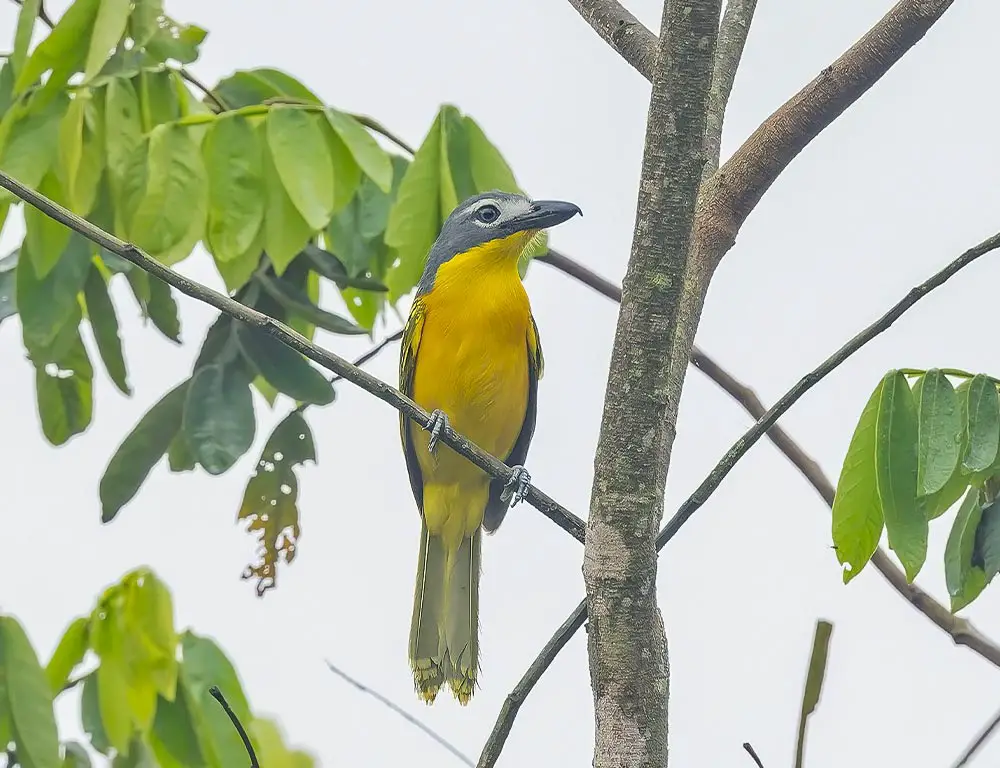
Monteiro’s bushshrike is a species of bird in the Malaconotidae family. It has two known subspecies: nominate monteiri and perspicillatus. The latter differs from the former by having a larger bill and paler undersides.
These birds are found mainly in Angola but have also been sighted in Cameroon, although only one specimen was recorded there.
They typically inhabit open savannahs with scattered trees where they feed on insects such as grasshoppers, caterpillars, beetles, and cicadas amongst others.
This species is threatened due to habitat destruction caused by human activities like deforestation or agricultural expansion which reduces its food sources significantly leading to population decline over time if not addressed soon enough.
Scientific classification:
| Kingdom | Animalia |
| Phylum | Chordata |
| Class | Aves |
| Order | Passeriformes |
| Family | Malaconotidae |
| Genus | Malaconotus |
| Species | M. monteiri |
To Recap
Angola is blessed with a remarkable diversity of bird species, with 12 representative examples showcased here. From the striking Lilac-breasted Roller to the majestic African Fish Eagle, these birds symbolize the richness of Angola’s avian life.
The country’s varied landscapes, from savannas to wetlands, provide vital habitats for these species. As Angola continues to develop, it is crucial to prioritize conservation efforts to safeguard these winged treasures and their ecosystems.
By preserving the natural habitats and raising awareness about the importance of these birds, Angola can ensure a sustainable future for both its avian inhabitants and its unique natural heritage.